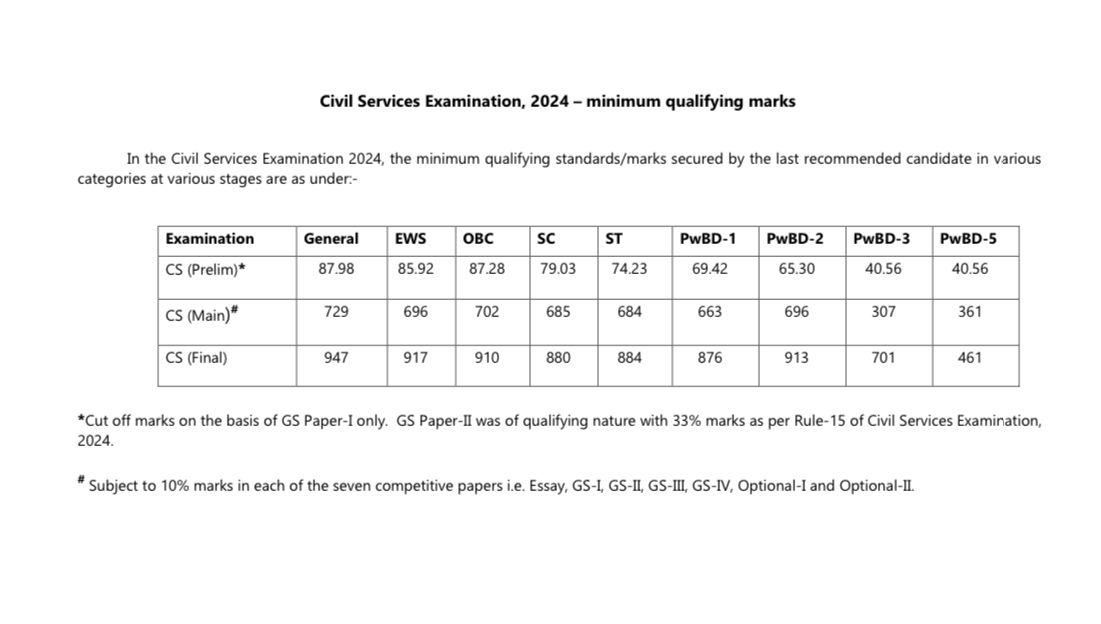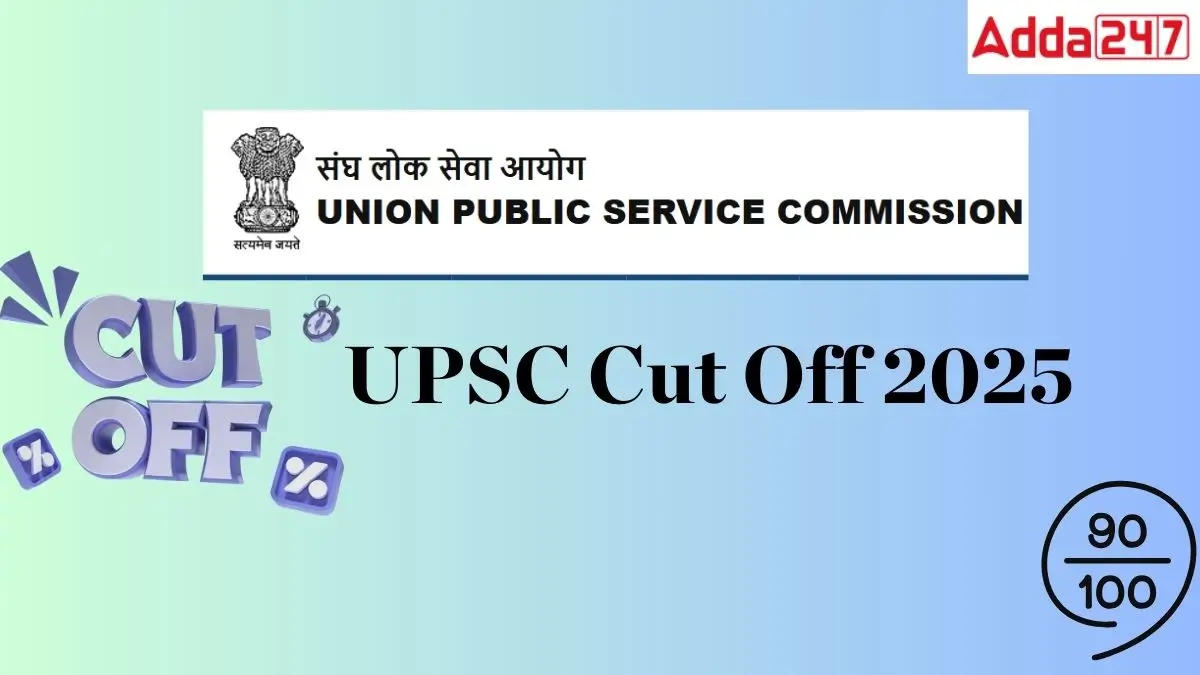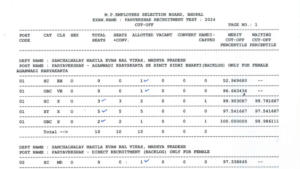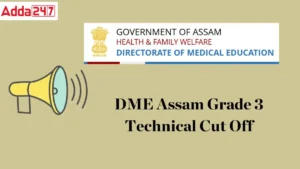UPSC Cut Off 2025 Out: The Union Public Service Commission (UPSC) conducts the Civil Services Examination (CSE) annually to recruit candidates for major services across the country. While lakhs of candidates appear each year, only a few clear the exam by scoring equal to or above the UPSC Cut Off 2025 for both Prelims and Mains. The final results and cutoff marks have been released today on the official website. Candidates who appeared for the Mains and Interview can now check their scores and qualifying status online.
UPSC Cut Off 2025 Out
The UPSC has conducted the Mains examination from September 20-29 in various shifts, and the results for the same are released on 09th December 2025. Candidates who cleared the UPSC CSE Mains Exam are called for the Personality Test from 07th January 2025 to 17th April 2025. The commission has released the UPSC CSE Final Result on 22 April 2025. UPSC Cut Off 2025 has also been released on the official website.

UPSC CSE Mains Cut Off 2025
This year, UPSC has shortlisted a total of 1129 vacancies (PWBD Vacancies also) reported in various services, including Group A and Group B Services. Aspirants can check the key details from the table below:
| UPSC Cut Off 2025: Key Highlights | |
| Recruiting Organisation | Union Public Service Commission (UPSC) |
| Exam Name | Civil Services Examination 2024 |
| Vacancies | 1129 |
| Candidates Selected | 1009 |
| UPSC CSE Prelims 2024 | 16 June 2024 |
| UPSC CSE Mains 2024 |
September 20 to September 29, 2024
|
| UPSC CSE Mains Result 2024 | 09 December 2024 |
| Final UPSC CSE Interview Date | 17 April 2025 |
| UPSC CSE Final Result 2024 | April 2025 |
| Official Website | @upsc.gov.in |
UPSC Cut Off: Previous Year Trends
The UPSC CSE Previous Year Cut Off Marks offer valuable insights into the minimum scores required to qualify at each stage of the examination. Here, we provide you with year-wise and category-wise UPSC Cut-Off Marks for the previous years. This data will help aspirants evaluate the competition, understand the exam standards, and strategise effectively to maximise their scores in the upcoming UPSC Civil Services Examination (CSE) 2025.
UPSC Prelims Cut-Off 2024
Aspirants can check the UPSC Prelims Cut off 2024 for various categories shared below.
| UPSC Prelims Cut-Off 2024 | |
| Category | UPSC Cut Off |
| General | 75.41 |
| EWS | 68.02 |
| OBC | 74.75 |
| SC | 59.25 |
| ST | 47.82 |
| PwBD-1 | 40.4 |
| PwBD-2 | 47.13 |
| PwBD-3 | 40.4 |
| PwBD-5 | 33.68 |
UPSC Mains Cut-Off 2024
Aspirants can check the UPSC Mains Cut off 2024 for various categories shared below.
| UPSC Mains Cut-Off 2024 | |
| Category | UPSC Cut Off |
| General | 741 |
| EWS | 706 |
| OBC | 712 |
| SC | 694 |
| ST | 692 |
| PwBD-1 | 673 |
| PwBD-2 | 718 |
| PwBD-3 | 396 |
| PwBD-5 | 445 |
UPSC Final Cut-Off 2024
The UPSC Final Cut Off 2024 provides the minimum score for a candidate to get in the overall recruitment procedure to get into any of the 23 Services mentioned in the official notification.
| UPSC Final Cut-Off 2024 | |
| Category | UPSC Cut Off |
| General | 953 |
| EWS | 923 |
| OBC | 919 |
| SC | 890 |
| ST | 891 |
| PwBD-1 | 894 |
| PwBD-2 | 930 |
| PwBD-3 | 756 |
| PwBD-5 | 589 |
UPSC CSE Prelims Cut Off Trends
For the convenience of the aspirants here, we have shared the UPSC Civil Services Prelims Cutoff for previous years from 2020-2023. Analyse the cutoff trends for various categories and know about the exam standards.
| UPSC CSE Prelims Cut Off Trends | |||||
| Category | 2023 | 2022 | 2021 | 2020 | 2019 |
| General | 75 | 88 | 87.5 | 92 | 98 |
| OBC | 74 | 87 | 84 | 89.5 | 95 |
| ST | 48 | 70 | 70 | 75.5 | 77 |
| SC | 58 | 80 | 72.5 | 74 | 82 |
| EWS | 63 | 82 | 76 | 77.5 | 90 |
| PWD 1 | 45 | 50 | 70 | 60 | 65 |
| PWD 2 | 47 | 55 | 68 | 63 | 60 |
| PWD 3 | 43 | 40 | 55 | 45 | 65 |
| PWD 4 | 41 | 42 | 60 | 46 | 65 |
UPS CSE Mains & Final Cutoff Trends
The UPSC CSE Mains and Final Cutoff marks for various years provide insights about the exam difficulty level and other information.
|
UPS CSE Mains & Final Cutoff Trends
|
|||
| Category | Year | Mains Cut Off (Out of 1750) |
Final Cut Off (Out of 2025)
|
| General | 2023 | 741 | 953 |
| 2022 | 748 | 960 | |
| 2021 | 745 | 953 | |
| 2020 | 736 | 944 | |
| EWS | 2023 | 720 | 923 |
| 2022 | 715 | 926 | |
| 2021 | 713 | 916 | |
| 2020 | 687 | 894 | |
| OBC | 2023 | 714 | 923 |
| 2022 | 714 | 923 | |
| 2021 | 707 | 910 | |
| 2020 | 698 | 907 | |
| SC | 2023 | 692 | 890 |
| 2022 | 699 | 893 | |
| 2021 | 700 | 886 | |
| 2020 | 680 | 875 | |
| ST | 2023 | 692 | 891 |
| 2022 | 706 | 900 | |
| 2021 | 700 | 883 | |
| 2020 | 682 | 876 | |
| PwBD 1 | 2023 | 673 | 879 |
| 2022 | 677 | 879 | |
| 2021 | 668 | 892 | |
| 2020 | 648 | 867 | |
| PwBD 2 | 2023 | 718 | 930 |
| 2022 | 706 | 913 | |
| 2021 | 712 | 932 | |
| 2020 | 699 | 910 | |
| PwBD 3 | 2023 | 396 | 632 |
| 2022 | 351 | 590 | |
| 2021 | 388 | 689 | |
| 2020 | 425 | 802 | |
| PwBD 4 | 2023 | 527 | 721 |
| 2022 | 419 | 702 | |
| 2021 | 560 | 701 | |
| 2020 | 300 | 575 | |
Also check the UPSC Previous Year Question Papers




 HSSC Group D Cut Off 2025 Out at hssc.go...
HSSC Group D Cut Off 2025 Out at hssc.go...
 MP Mahila Paryavekshak Cut Off 2025 Out,...
MP Mahila Paryavekshak Cut Off 2025 Out,...
 DME Assam Grade 3 Cut Off 2025, Check Te...
DME Assam Grade 3 Cut Off 2025, Check Te...




 Adda247 Job portal has complete information about all Sarkari Jobs and Naukri Alerts, its latest recruitment notifications, from all state and national level jobs and their updates.
Adda247 Job portal has complete information about all Sarkari Jobs and Naukri Alerts, its latest recruitment notifications, from all state and national level jobs and their updates.